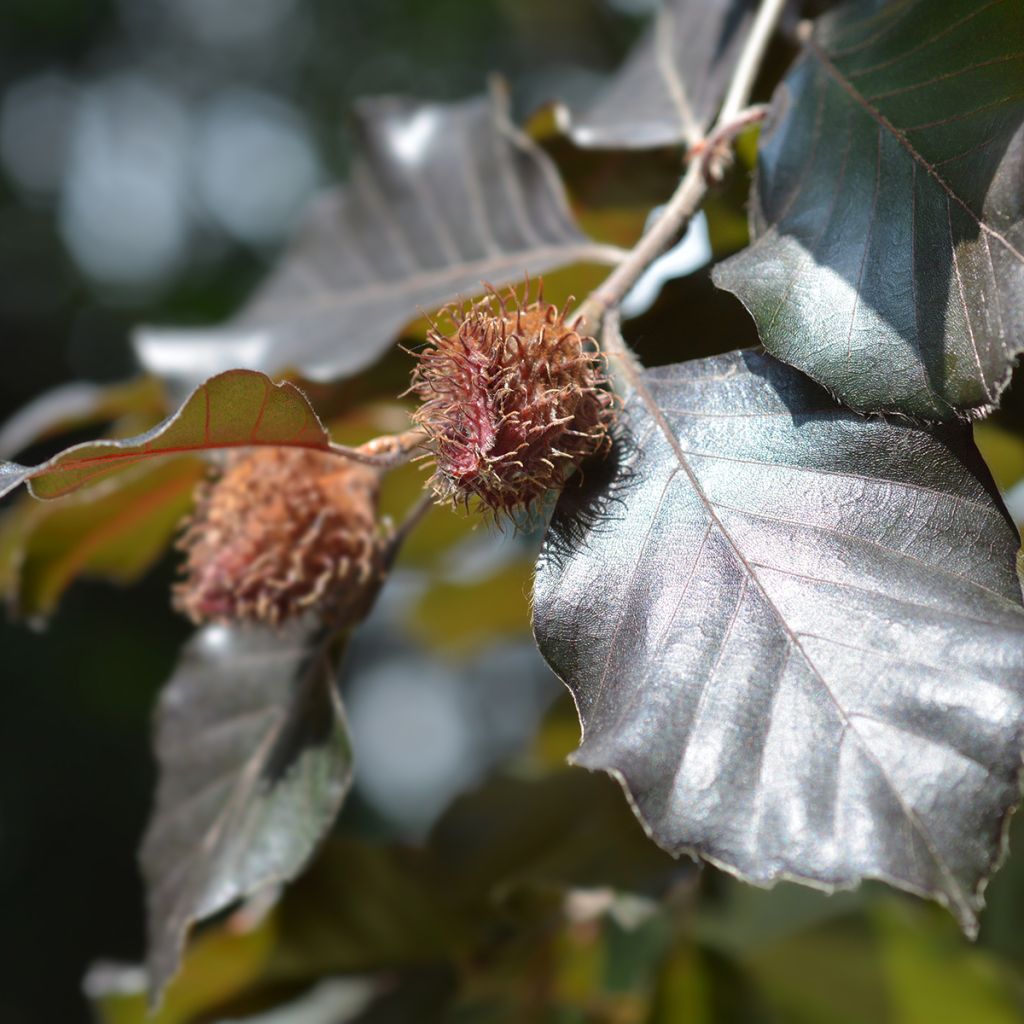

Fagus sylvatica Atropurpurea - Beech
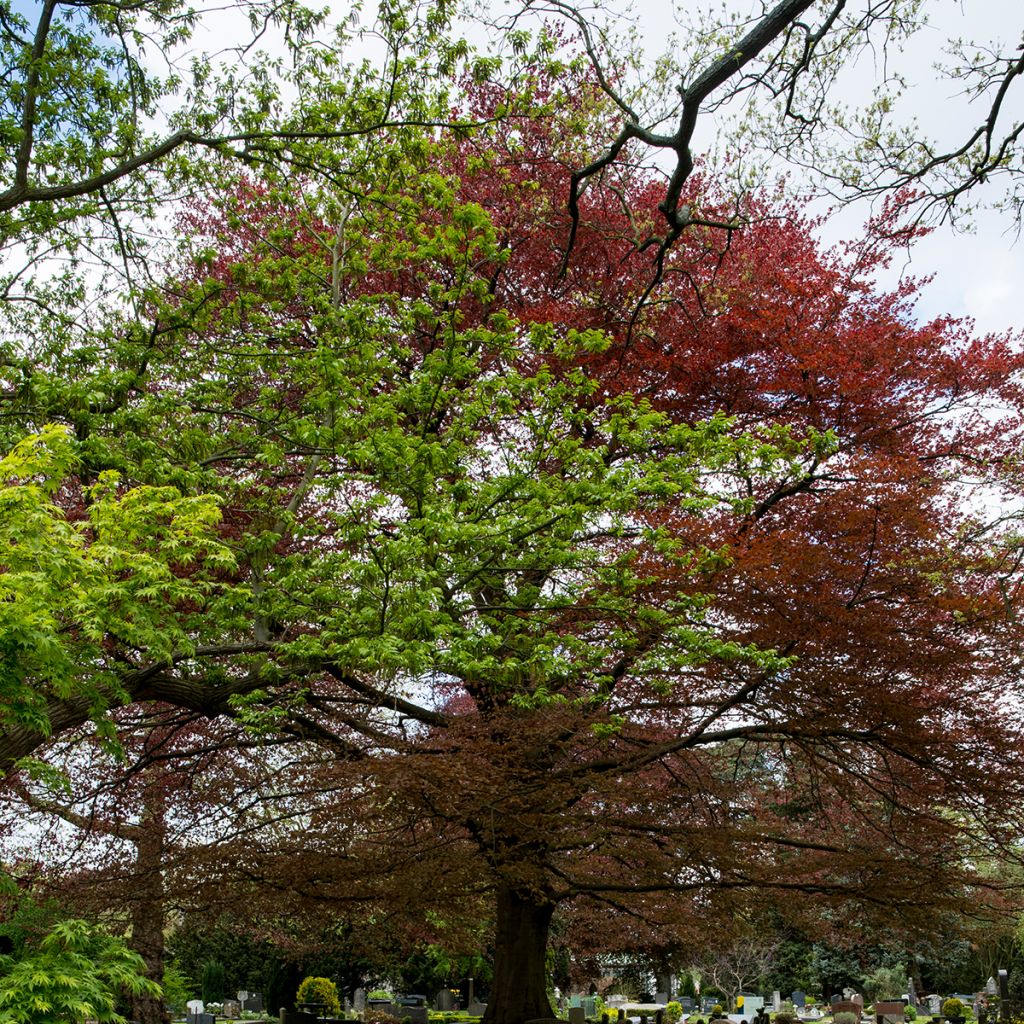

Fagus sylvatica Atropurpurea - Beech
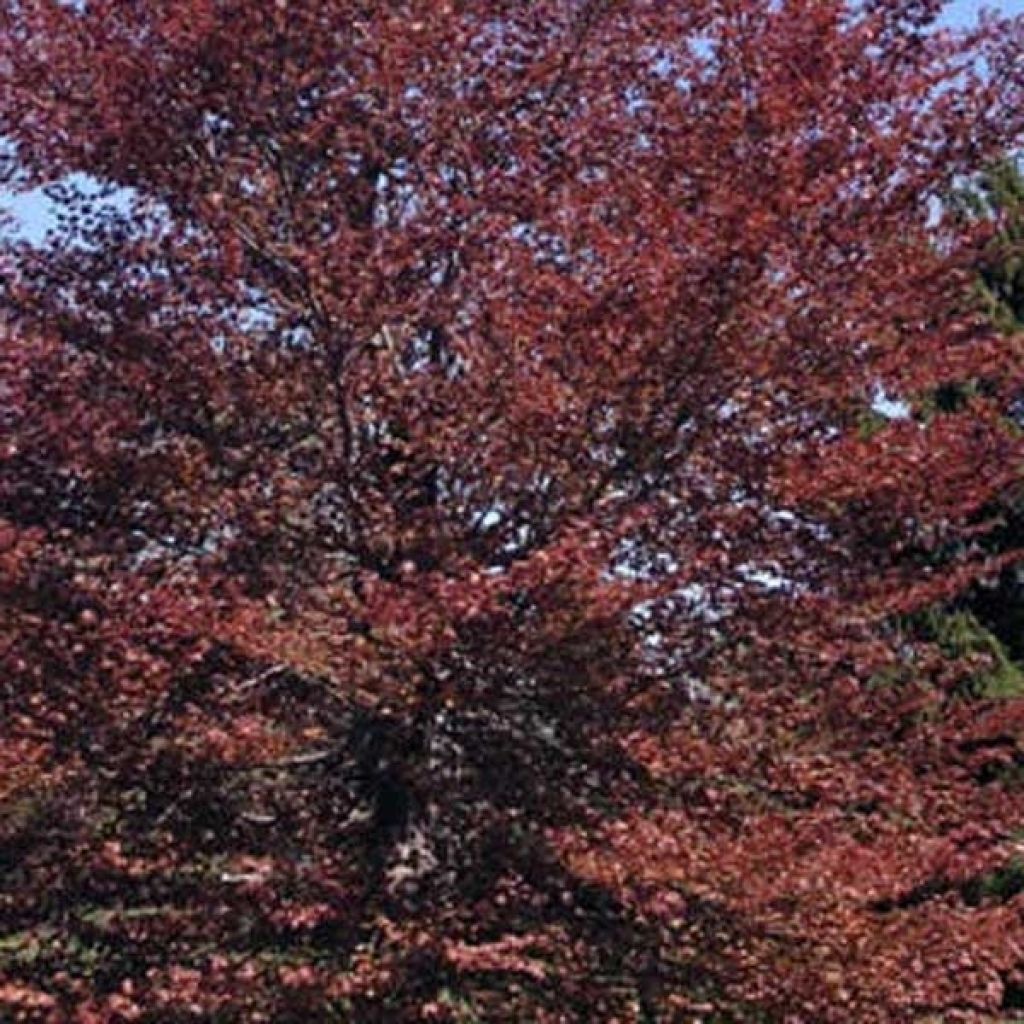

Fagus sylvatica Atropurpurea - Beech
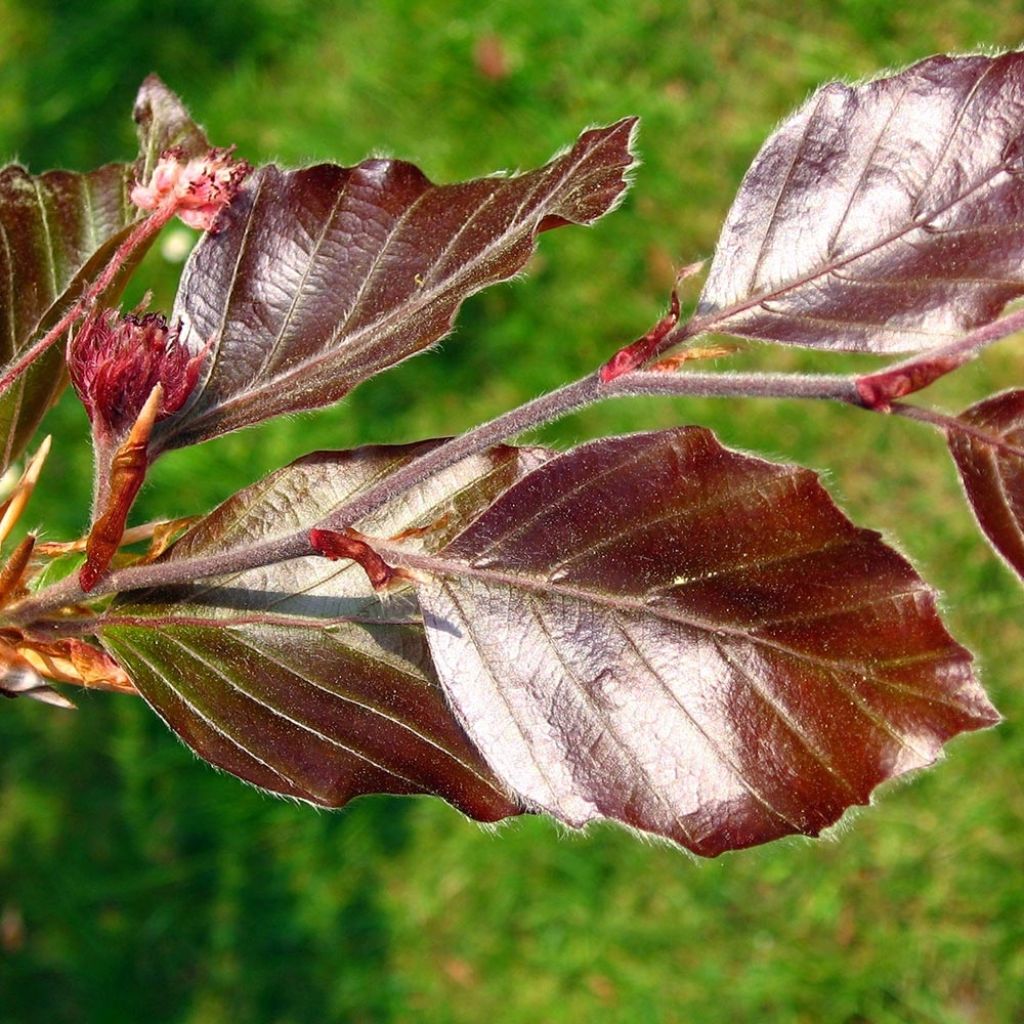

Fagus sylvatica Atropurpurea - Beech
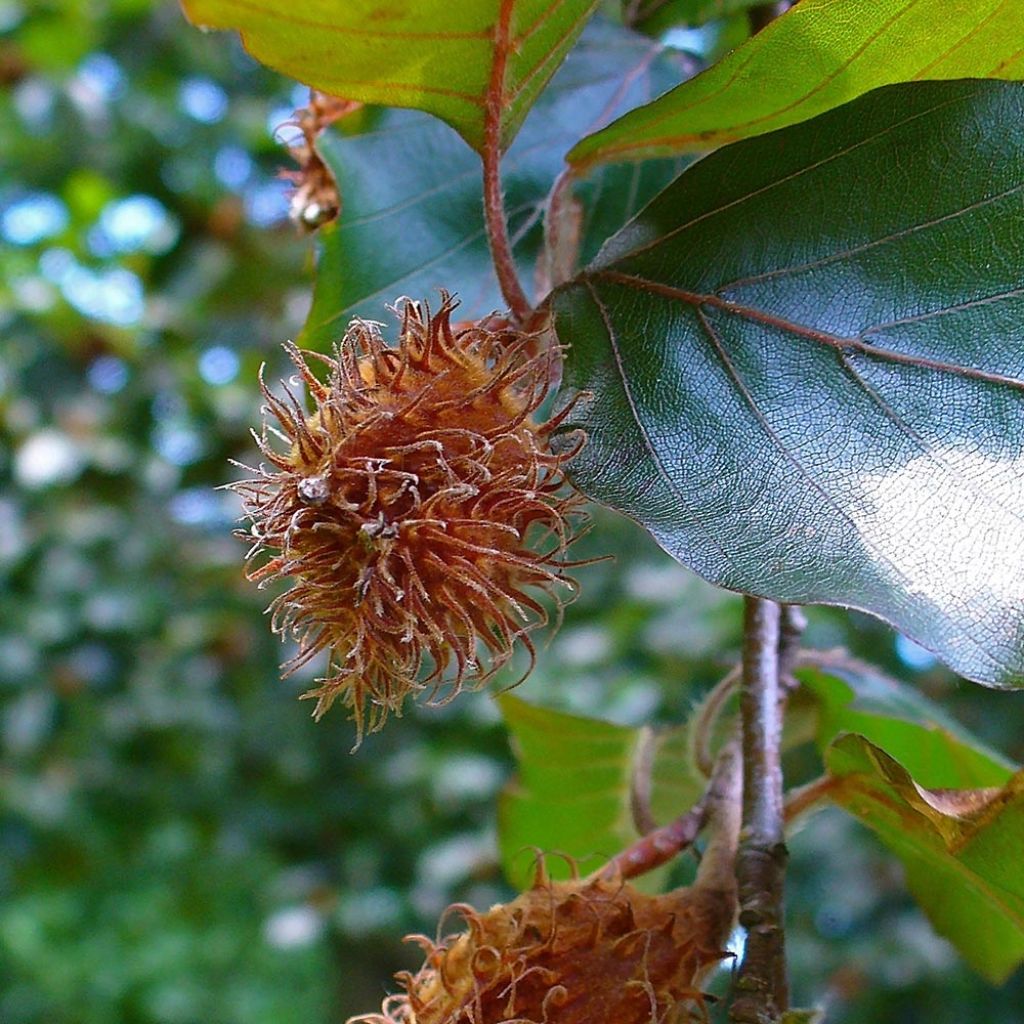

Fagus sylvatica Atropurpurea - Beech
Fagus sylvatica Atropurpurea - Beech
Fagus sylvatica Atropurpurea
European Beech, Common Beech
As soon as it arrived, it was planted in the ground, a beautiful 1m tall tree with bare roots. Can't wait to see them in spring!
alain, 08/12/2024
Special offer!
Receive a €20 voucher for any order over €90 (excluding delivery costs, credit notes, and plastic-free options)!
1- Add your favorite plants to your cart.
2- Once you have reached €90, confirm your order (you can even choose the delivery date!).
3- As soon as your order is shipped, you will receive an email containing your voucher code, valid for 3 months (90 days).
Your voucher is unique and can only be used once, for any order with a minimum value of €20, excluding delivery costs.
Can be combined with other current offers, non-divisible and non-refundable.
Home or relay delivery (depending on size and destination)
Schedule delivery date,
and select date in basket
This plant carries a 24 months recovery warranty
More information
We guarantee the quality of our plants for a full growing cycle, and will replace at our expense any plant that fails to recover under normal climatic and planting conditions.
Would this plant suit my garden?
Set up your Plantfit profile →
Description
The Fagus sylvatica Atropurpurea, commonly known as the Purple Beech, is a beautiful tree often used for hedges, as it tolerates pruning very well. It is also highly appreciated for its dense marcescent foliage, with a beautiful reddish-purple colour, which remains on the branches until the following spring, when new leaves appear. Depending on your budget, the length of your hedge, your patience, and the time you can dedicate to gardening, different types of products are available to you.
- For an economical purple beech hedge, opt for 9cm pots that can be planted all year round, or choose bare-root plants for autumn or winter planting. Soil preparation should be meticulous (careful weeding, removal of all roots, planting trench), and it is preferable to place a weed suppressant sheet at the base of the shrubs to limit weed germination until they settle. Once established, they grow rapidly and will quickly catch up with their cultivated counterparts in bigger pots. This is the most economical solution when it comes to creating a hedge of at least 10m (32ft) in length.
- For a fast-growing purple beech hedge or to fill in an existing hedge, your choice should be 2-litre or even 5-litre potted bushes. Potted bushes can be planted all year round, except during freezing or extremely hot periods. They are planted in individual planting holes, like all other garden shrubs. While they have an immediate effect, they take a little longer to establish and will require more frequent and regular watering, especially when the summer is dry.
Respect the proper planting distance according to the size of your plant! It is advisable to leave a space of 60cm (23.6in) between each plant for shrubs in pots and bare roots, 70 to 80 cm (31.5in) for plants in 2 or 3-litre pots, and 80cm (31.5in) to 1m (3ft 4in) for pots from 4 to 10 litres.
The Fagus sylvatica Atropurpurea is an imposing tree with a semi-spreading habit. Its cylindrical trunk can measure up to 3m (9ft 10in) in diameter and is covered with a smooth bark of light grey colour. This tree can live for several centuries. Originally from central Europe to the Caucasus, it is one of the most common species in European forests. The Fagus sylvatica Atropurpurea is a very popular tree, along with the oak. Of imposing size, it can reach up to 25m (82ft) in height at maturity.
Its marcescent foliage is very dense. It consists of alternate and elliptical leaves measuring 4 to 10cm (3.9in) in length. The leaf margins are undulate and villous. They have 5 to 9 pairs of lateral veins. When the tree is young, the leaves are pale green. They turn a coppery-violet colour. They are marcescent, meaning they dry up while remaining on the tree until the next spring when new leaves appear.
The flowers appear almost at the same time as the leaves. From April to May, monoecious flowers appear. The male flowers are yellow and are grouped in pendulous catkins measuring 40 to 60mm (2.4in). The female flowers are green and are grouped in pairs or groups of 4 at the ends of the branches. The Fagus sylvatica atropurpurea produces fruits called beech nuts, which are shiny brown and covered in prickles. These fruits, 12 to 18mm (0.7in) long, are edible in small quantities. In the past, mountain dwellers used them to make flour. It is used as a hedge because it tolerates pruning very well. Its reddish wood is used in cabinetmaking and for the production of wooden tools, toys, and firewood.
Report an error about the product description
Fagus sylvatica Atropurpurea - Beech in pictures




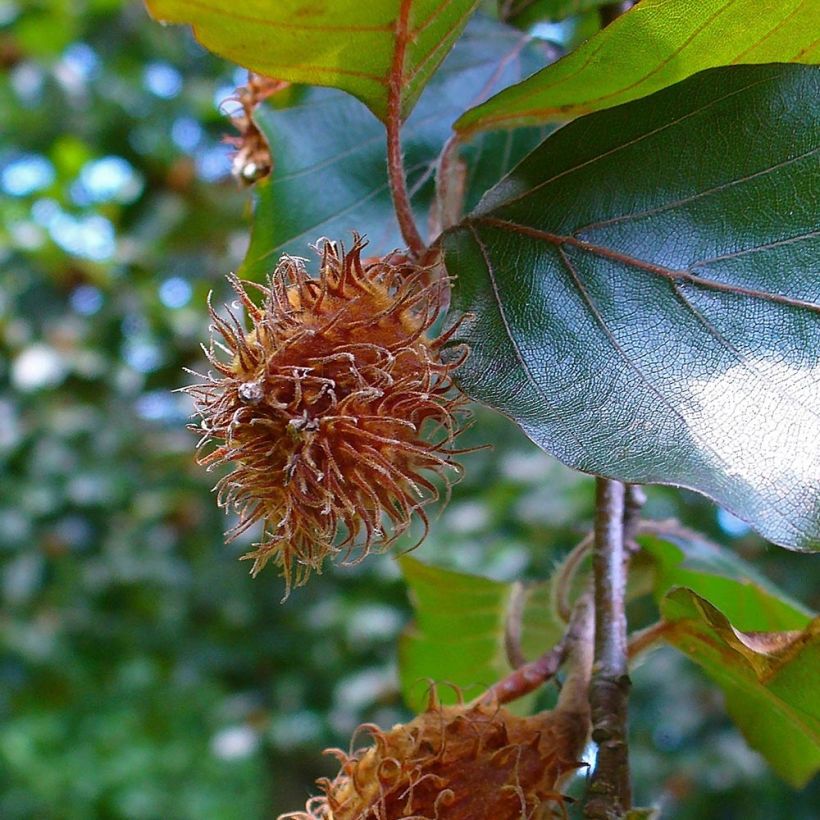

Plant habit
Flowering
Foliage
Botanical data
Fagus
sylvatica
Atropurpurea
Fagaceae
European Beech, Common Beech
Fagus sylvatica 'Atropunicea'
Central Europe
Planting and care
The Fagus sylvatica Atropurpurea enjoys partial shade and non-scorching sunlight. It thrives in cool and temperate climates. The soil should be moist, well-drained, and always maintain a constant level of humidity as it does not tolerate drought. Plant it with its root ball intact to give it the best chance of long-term survival. In February-March, when the tree is dormant, remove any branches that compromise its symmetry or are tangled, to maintain a good habit. Beware of aphids and scale insects, as well as mildew.
Planting period
Intended location
Care
-
, onOrder confirmed
Reply from on Promesse de fleurs
Haven't found what you were looking for?
Hardiness is the lowest winter temperature a plant can endure without suffering serious damage or even dying. However, hardiness is affected by location (a sheltered area, such as a patio), protection (winter cover) and soil type (hardiness is improved by well-drained soil).

Photo Sharing Terms & Conditions
In order to encourage gardeners to interact and share their experiences, Promesse de fleurs offers various media enabling content to be uploaded onto its Site - in particular via the ‘Photo sharing’ module.
The User agrees to refrain from:
- Posting any content that is illegal, prejudicial, insulting, racist, inciteful to hatred, revisionist, contrary to public decency, that infringes on privacy or on the privacy rights of third parties, in particular the publicity rights of persons and goods, intellectual property rights, or the right to privacy.
- Submitting content on behalf of a third party;
- Impersonate the identity of a third party and/or publish any personal information about a third party;
In general, the User undertakes to refrain from any unethical behaviour.
All Content (in particular text, comments, files, images, photos, videos, creative works, etc.), which may be subject to property or intellectual property rights, image or other private rights, shall remain the property of the User, subject to the limited rights granted by the terms of the licence granted by Promesse de fleurs as stated below. Users are at liberty to publish or not to publish such Content on the Site, notably via the ‘Photo Sharing’ facility, and accept that this Content shall be made public and freely accessible, notably on the Internet.
Users further acknowledge, undertake to have ,and guarantee that they hold all necessary rights and permissions to publish such material on the Site, in particular with regard to the legislation in force pertaining to any privacy, property, intellectual property, image, or contractual rights, or rights of any other nature. By publishing such Content on the Site, Users acknowledge accepting full liability as publishers of the Content within the meaning of the law, and grant Promesse de fleurs, free of charge, an inclusive, worldwide licence for the said Content for the entire duration of its publication, including all reproduction, representation, up/downloading, displaying, performing, transmission, and storage rights.
Users also grant permission for their name to be linked to the Content and accept that this link may not always be made available.
By engaging in posting material, Users consent to their Content becoming automatically accessible on the Internet, in particular on other sites and/or blogs and/or web pages of the Promesse de fleurs site, including in particular social pages and the Promesse de fleurs catalogue.
Users may secure the removal of entrusted content free of charge by issuing a simple request via our contact form.
The flowering period indicated on our website applies to countries and regions located in USDA zone 8 (France, the United Kingdom, Ireland, the Netherlands, etc.)
It will vary according to where you live:
- In zones 9 to 10 (Italy, Spain, Greece, etc.), flowering will occur about 2 to 4 weeks earlier.
- In zones 6 to 7 (Germany, Poland, Slovenia, and lower mountainous regions), flowering will be delayed by 2 to 3 weeks.
- In zone 5 (Central Europe, Scandinavia), blooming will be delayed by 3 to 5 weeks.
In temperate climates, pruning of spring-flowering shrubs (forsythia, spireas, etc.) should be done just after flowering.
Pruning of summer-flowering shrubs (Indian Lilac, Perovskia, etc.) can be done in winter or spring.
In cold regions as well as with frost-sensitive plants, avoid pruning too early when severe frosts may still occur.
The planting period indicated on our website applies to countries and regions located in USDA zone 8 (France, United Kingdom, Ireland, Netherlands).
It will vary according to where you live:
- In Mediterranean zones (Marseille, Madrid, Milan, etc.), autumn and winter are the best planting periods.
- In continental zones (Strasbourg, Munich, Vienna, etc.), delay planting by 2 to 3 weeks in spring and bring it forward by 2 to 4 weeks in autumn.
- In mountainous regions (the Alps, Pyrenees, Carpathians, etc.), it is best to plant in late spring (May-June) or late summer (August-September).
The harvesting period indicated on our website applies to countries and regions in USDA zone 8 (France, England, Ireland, the Netherlands).
In colder areas (Scandinavia, Poland, Austria...) fruit and vegetable harvests are likely to be delayed by 3-4 weeks.
In warmer areas (Italy, Spain, Greece, etc.), harvesting will probably take place earlier, depending on weather conditions.
The sowing periods indicated on our website apply to countries and regions within USDA Zone 8 (France, UK, Ireland, Netherlands).
In colder areas (Scandinavia, Poland, Austria...), delay any outdoor sowing by 3-4 weeks, or sow under glass.
In warmer climes (Italy, Spain, Greece, etc.), bring outdoor sowing forward by a few weeks.
































